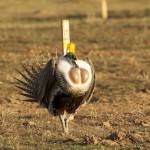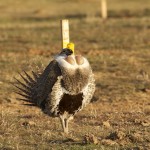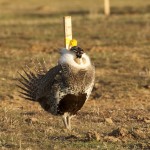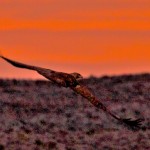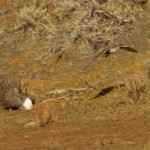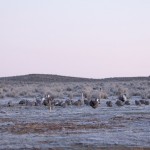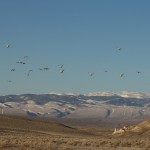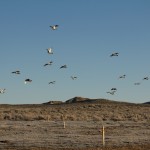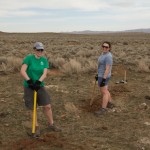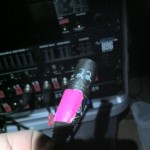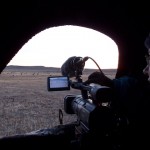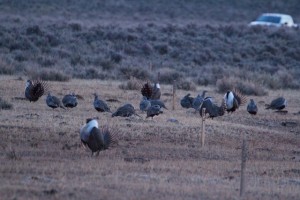Most of the males strutting their stuff on a sage-grouse lek are in their second year or older- in other words, they were hatched at 2 calendar years ago. What about the yearling males? Some are precocious enough to gain territories, and can be tough to tell from adults. Most though spend their time on the lek in a sleeked posture, trying to avoid drawing unwanted attention from adult males. This only works for so long, leading to one of the more humorous sights on the lek- a non-territorial male getting chased by an adult into another’s territory, who then chases him into a third territory, and so on. Often the young male will end up taking wing to avoid an angry pursuer, sometimes landing close to where the whole thing began!
Sometimes though, these not-very-competent males give it a go with their displays. These are often somewhat awkward looking, either because males need some amount of practice to perfect this innate behavior, or because they just don’t have the anatomy and physiology yet to perform a full strut. I saw some of this on one of my recent visits to Monument Lek. Two clearly yearling males walked down the lek towards the recording blind, and both gave a few displays. I managed to catch some still photos of the first male, and remembered the video capabilities of my camera when the second male started going. It was very fun to see all of this at close range.

